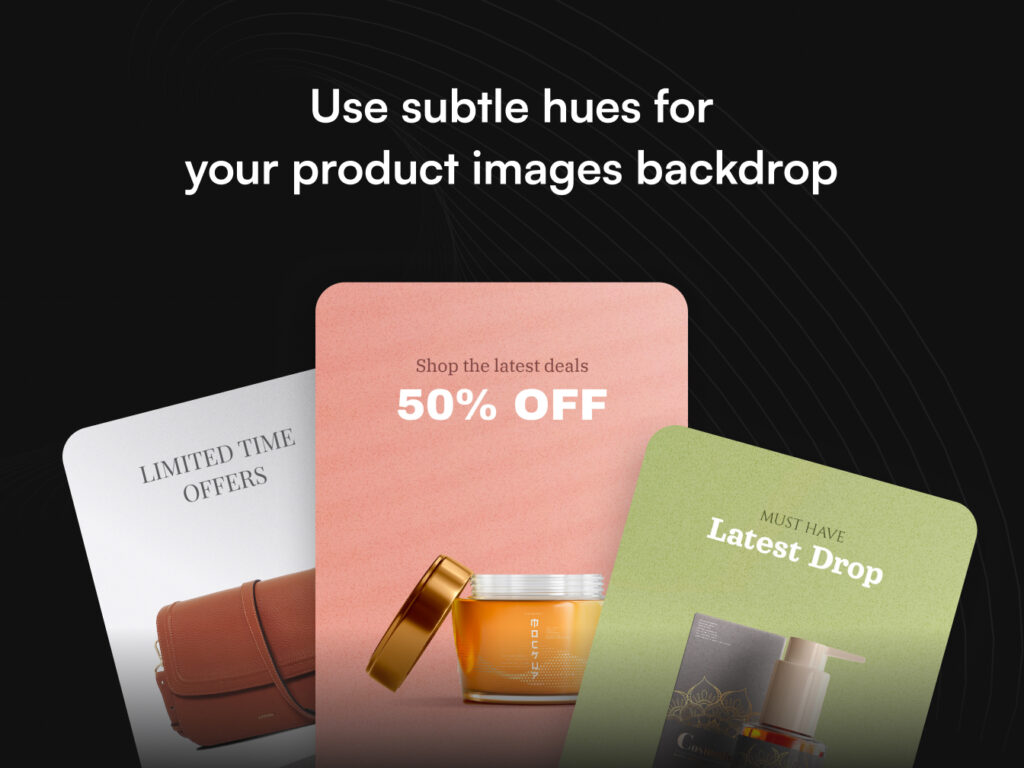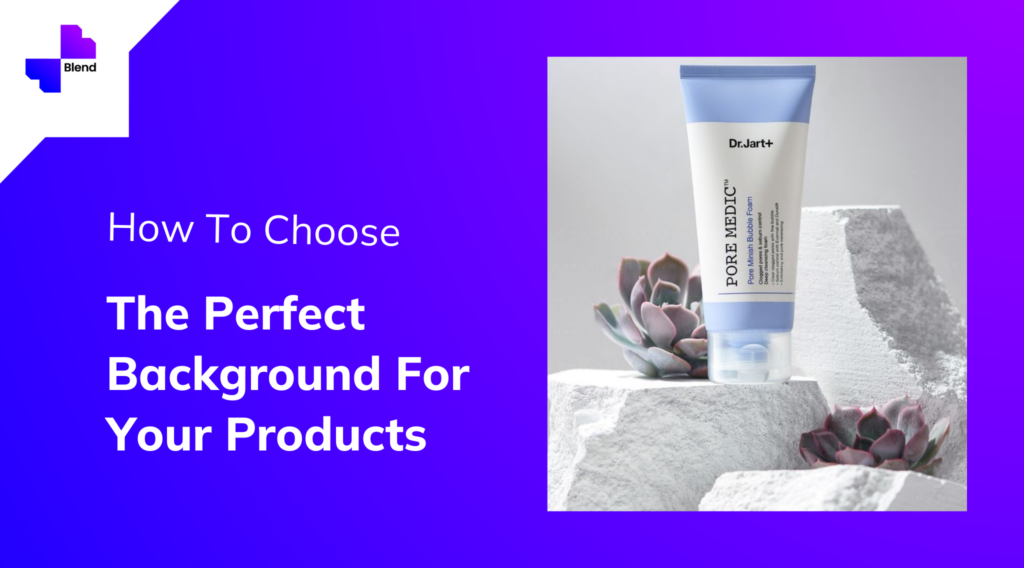How would you like to create the perfect product photography background for every shoot? After all, in the e-commerce business, the first perception counts a lot. Images play a crucial role in online selling because they are the primary factor in attracting clients’ attention. As a result, your product photos must stand out, and you can show off your items in the best light by using a proper backdrop for product photography. The right product background can help you emphasize unique qualities and convey your product to your target audience clearly and attractively.
How To Choose The Right Background For Different Products
The product background is as crucial as getting the appropriate angle, lens, and light to capture the product. Mostly, people prefer white backgrounds for product photography. However, when trends shift, new backdrops emerge. In any case, the golden thumb rule is that you need to make sure that the background isn’t distracting.
Here are some simple-to-use guidelines to help you decide on the right background for different types of products.
1. Use a plain background instead of a busy one
It is critical for the product to be the central focus of any photograph. Using a crowded backdrop will draw attention away from the main item(s) and toward the backdrop, which is bad for the seller.
Most of the time, a cluttered backdrop with several elements isn’t appropriate for a product image. When selecting a suitable background for product photography, avoid using a background with hectic features. Everyone wants to see the details of the item that they’re looking to purchase.

2. Use colors that aren’t overpowering
When looking for a product, bright colors appear to be highly unappealing. Bright backgrounds are preferred for adverts and billboards, not for digital product photographs. Use subtle hues for the backdrop of product images.
The background color is crucial since it aids in making the product stand out from the rest of the photograph. Some background colors complement the goods wonderfully, while others cause errors.
Although a light-colored backdrop is ideal for product photography, there are specific criteria for photos in various situations. You must use a distinct color as the background in each case.
In addition, photo backgrounds for e-commerce sites like Amazon, Etsy, and Flipkart have their list of image requirements to choose the backdrop color correctly.

3. Use a grey background
Grey, particularly its lighter shades, is particularly an excellent backdrop for product photography because it is not too boisterous and doesn’t distract from the product itself. It’s a color that belongs to the neutral family.
Product photos with a light backdrop hue, such as white or gray, are the most welcoming. You can also employ the backdrop color of grey as an alternative to white. This can be used for photo backgrounds for e-commerce sites.
Since e-commerce marketplaces use white as the page color, product photos using grey as the color scheme to differentiate the site area from a picture, work well.

4. Decide the background based on the texture
Simple textures such as marble patterns, checkerboards, gradation, or any other texture serve as great backgrounds for product photography. This is ideal for people who don’t want a plain backdrop but want to stay on the primary side.

5. Use a wooden floor as a background
The wooden floor background isn’t just appropriate for furniture pieces like tables and chairs, it looks professional and natural for other types of products too. Also, for a top-choice background, it’s easily accessible to most people.

Removing the background from existing photos and adding a new one
What if you have product photos from a previous shoot, and everything is good if only you could change the background and re-use it?
In post-production, background removal is actually a commonly required photo alteration technique.
You don’t really need to use sophisticated editors like Photoshop for this task. You can use photo editors like Blend to easily remove backgrounds and unwanted distractions from your photographs to then use it with either a transparent background or a new one.
Testing your products against different backdrops
Depending on your goods and photo backdrops, you’ll need to adjust your lighting settings. You may need to set aside time and resources to test your product against several backdrops, changing the lighting for each.
The light placement can cast or remove shadows, change hues, and produce hot spots. The sort of lighting you employ might also impact the result. Fluorescent lights, LED lights, and tungsten lights are the three most used studio lights.
Making use of props
You might not like your product to stand solo in some circumstances.
While some product photography should display an object from all perspectives, in some photographs you can use props to emphasize the object’s uses or features.
Say, if you sell a water bottle, your product image should emphasize the bottle’s most significant characteristics. Action photos showing models using your water bottle as well as images of your water bottle in a home or some other place would fit well.
Using product photography backdrops to tell a story
If you’re still having trouble picking the ideal photography backdrop for your products, think about the story you’re attempting to convey.
Are your clients athletic?
Are they computer savvy?
Do they place a high priority on the family?
Are they health conscious?
How does your product assist clients in achieving their objectives?
You can zero in on a story as you discover more about your items and audience. By offering context, your product photography backdrop adds to the story. A natural environment, a warm hue, and a sharp line impact the information you present in an image.

Endnotes
Now you know how to choose the right background for different products. Choose the appropriate backdrop, enhance your product, and make use of photo editors like Blend for features like background removal, and changing backgrounds.

